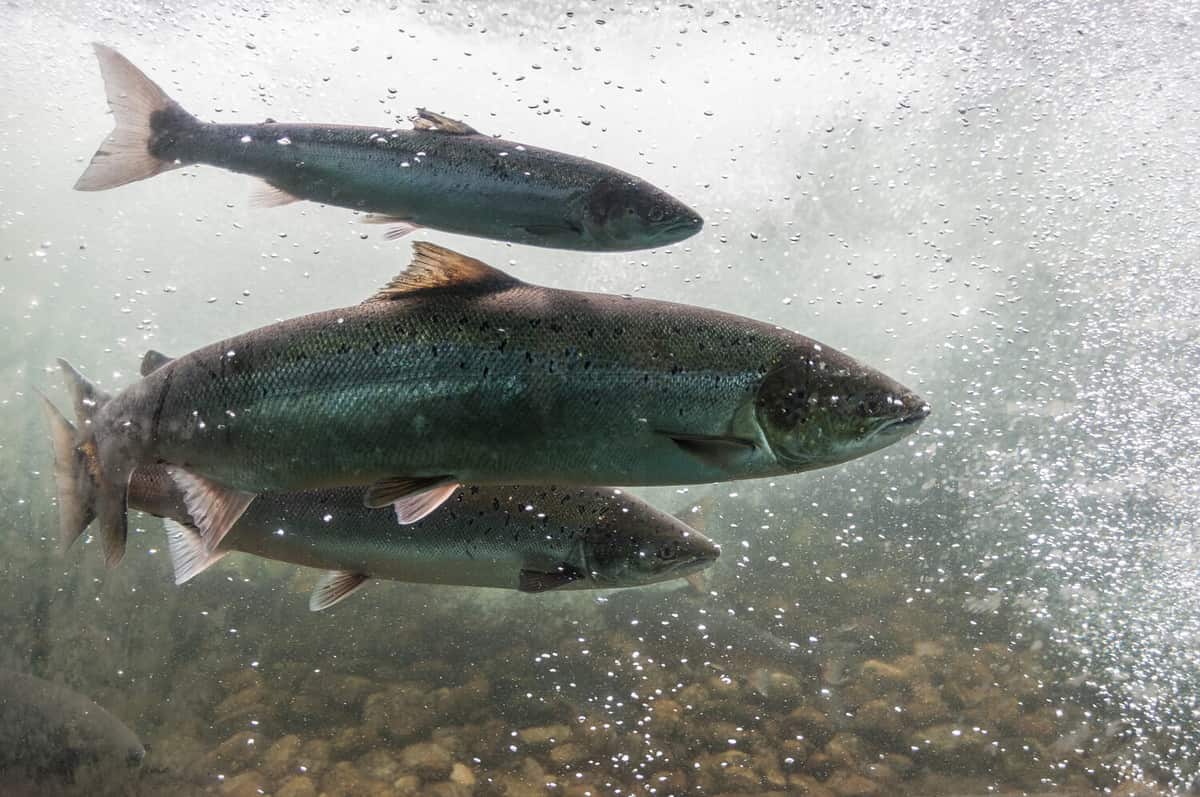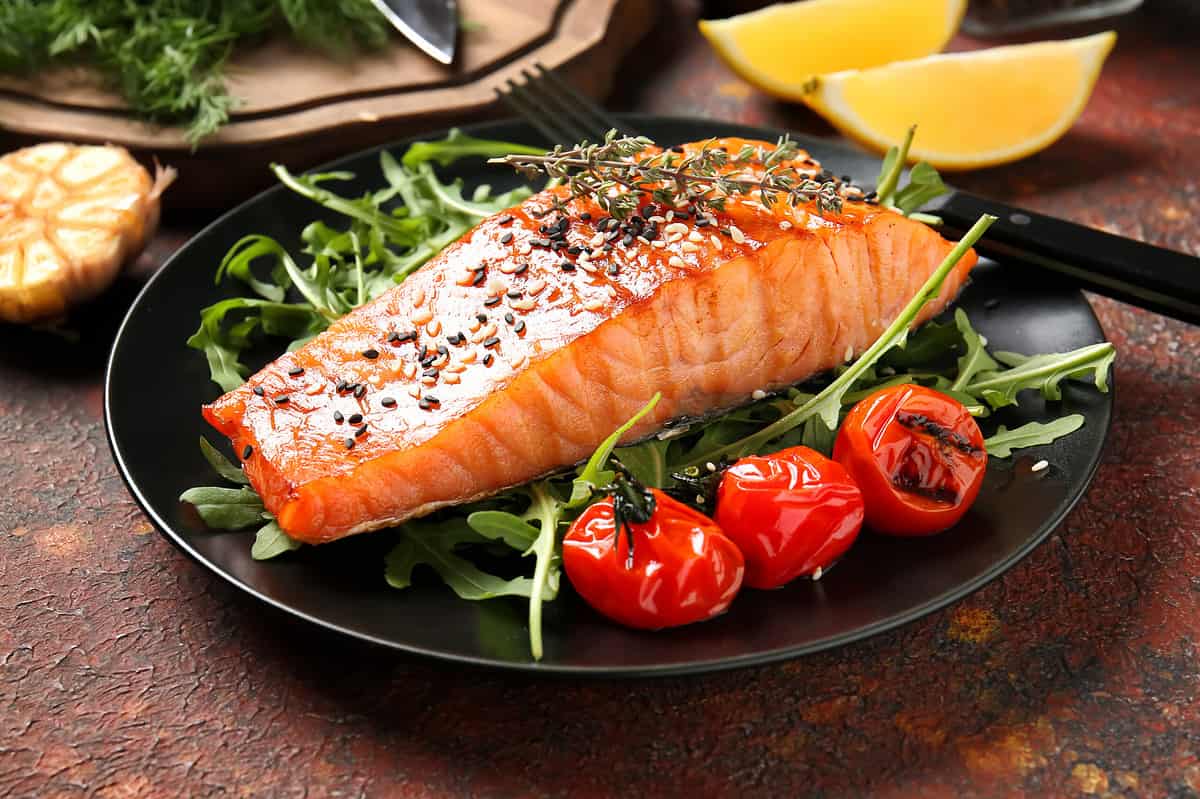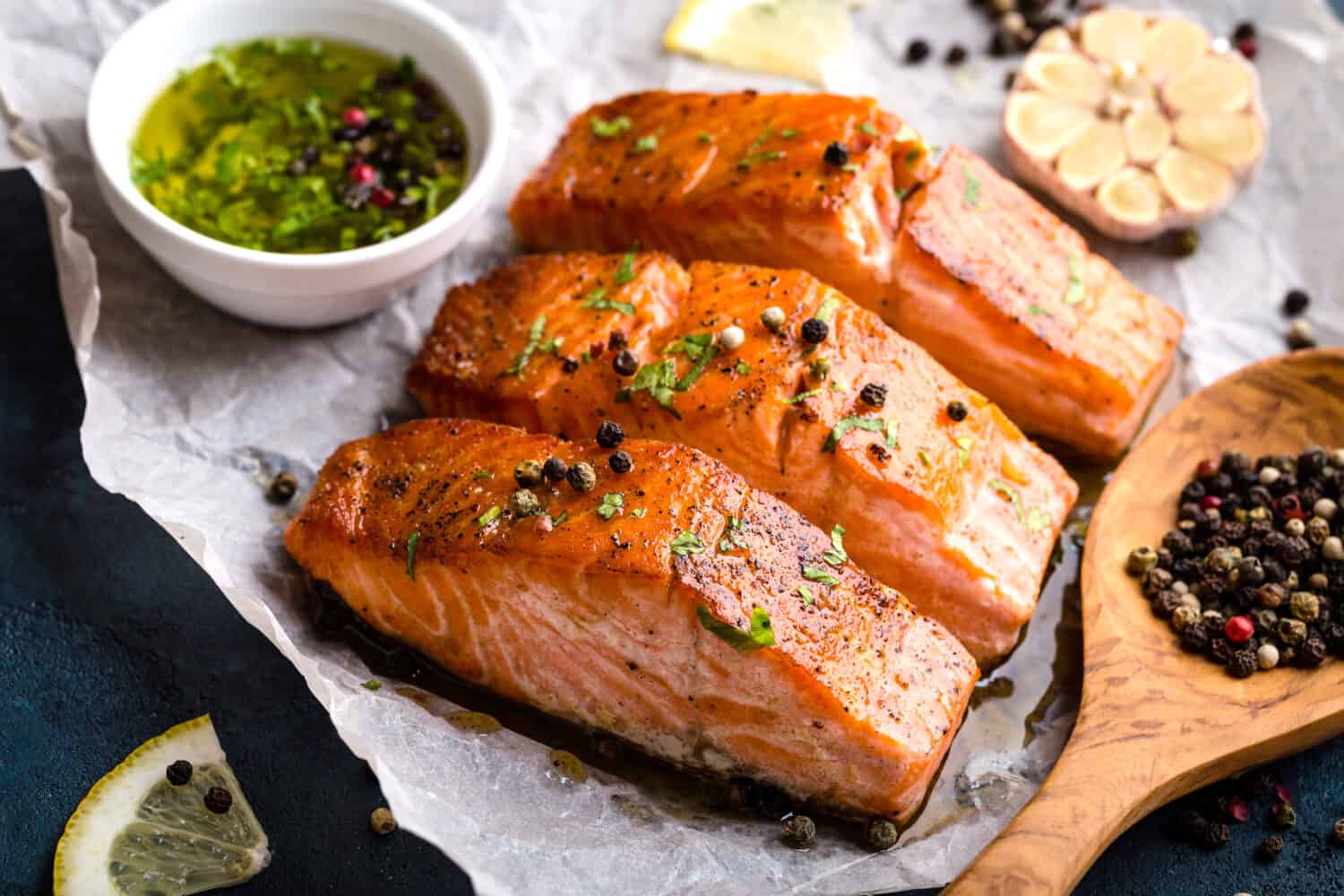Salmon is a very popular lean meat that many people eat. It is full of plenty of nutrients, vitamins, and minerals. It is also versatile and, when cooked right, can be packed with plenty of flavor. Knowing how to cook salmon in a pan perfectly can change how you view this tasty meat and leave you wanting to add salmon to your weeknight dinner menu frequently!
What is Salmon?
Salmon is a favored fish that is found mainly in the Atlantic Ocean. However, there are also different types of salmon found in the Pacific. These include Sockeye salmon, Silver Salmon, and the Chinook Salmon.
Salmon can grow to be big, averaging between ten and thirty pounds. Most adult salmon can be found in the ocean, although when salmon are ready to spawn, they will return to lakes and streams.
What salmon looks like will depend upon the species. Most of the time, they have silver sides.
Cooking Salmon For Its Health Benefits
Salmon has an abundance of nutrients. This is one reason it is a very popular meat, especially if someone is cautious about their health. The vitamins and nutrients that salmon contains include:
- Protein
- Fat
- Selenium
- Phosphorus
- B-vitamins
While we know that salmon is full of nutrients, what does this mean for our overall health? Some studies show these nutrients can benefit a combination of areas.
For starters, omega-3 fatty acids are believed to do many things, such as lowering inflammation, reducing cancer risks, benefiting arteries, and lowering blood pressure. Salmon is one of the best foods to eat for omega-3 fatty acids.
Salmon is also high in protein. Our body needs protein because it promotes bone health. Salmon also has potassium, which helps lower blood pressure.
These are all excellent reasons to cook salmon, and knowing how to do it flawlessly will add delicious flavor!

©Jakub Rutkiewicz/Shutterstock.com
How to Cook Salmon Perfectly in a Pan
Although salmon has plenty of health benefits, some people avoid cooking it because the flavor can be a bit fishy. While not all salmon is strong in their fish flavor, it can be offputting to some. With this pan-searing method, you will be able to add flavors and seasonings that are bold or mild. These bold flavors bring to the table something unique and delicious. In contrast, mild flavors will taste delicate. On top of that, you will be able to say goodbye to dry salmon and hello to a juicy, tender, and flavorful fish you will love.
Before Pan-Searing The Salmon, Keep These Tips in Mind:
- Use salmon that has its skin still on. This will keep the salmon from falling apart while cooking.
- Play around with flavoring. Although you can use seasoning and juice to produce bold flavors, it's not necessary. A mild and delicate fish is just as delicious!
- Lay the salmon on the countertop to reach room temperature before cooking.
- A fish spatula is your best friend! It will make the task of flipping the salmon a whole lot easier.
How to Cook Salmon in a Pan
- First, lay the salmon on the countertop and allow it to reach room temperature before cooking. This is typically around 10 to 20 minutes.
- Heat butter in a cast iron skillet. You can use a stainless steel pan if you do not have a cast iron skillet. The pan needs to be able to cook at high temperatures and evenly.
- Pat the salmon dry after it reaches room temperature, and then season it with the desired seasoning.
- Heat the butter or olive oil in the skillet until it is very hot.
- Add the salmon to the skillet when the butter or oil is hot enough.
- Sear the salmon for 5 to 6 minutes on the flesh side, then flip. Continue to sear the salmon on the skin side for 4 to 5 minutes. The result will be a crispy brown outside with a tender and savory inside.
- Remove from the heat and add any juice you desire, such as orange or lime juice.
- Enjoy with your favorite side dishes!
What Can You Add to the Salmon For Flavor?
While pan-searing salmon is pretty straightforward, do not be afraid to play with flavoring. Most salmon have a very mild flavor, although there are particular salmon with a bolder taste, like Sockeye. However, if your salmon is leaving much to be desired in the flavor department, consider adding one or more of these ingredients to increase texture and taste!
Rub the salmon with dried spices, and these spices can include:
- Salt
- Pepper
- Smoked paprika
- Chili powder
- Jerk seasoning
- Cajun seasoning
- Cumin
- Allspice
- Garlic powder
- Onion powder
- Ginger
- Parsley
- Rosemary
- Thyme
- Oregano
- Brown sugar
- Minced garlic
Since salmon has a gentle flavor and high-fat content, it can handle robust and bold flavors. However, if you want a softer taste, use less assertive flavors.
Another way to season your salmon is by using juices. Try pairing the fish with one of these delicious liquids.
- Melted butter
- Lemon juice
- Lime juice
- Orange juice
Whether you prefer strong and bold flavors or a more subtle taste, these seasonings and flavors are perfect for your next pan-seared salmon!

©Pixel-Shot/Shutterstock.com
Salmon Recipes to Try This Week
- Savory Salmon Patties Recipe
- Healthy Baked Salmon Dijon Recipe
- Spreadable Smoked Salmon Recipe
- Lemon-Crusted Salmon with Citrus Herb Sauce Recipe
- Salmon with Mango Salsa Recipe
Remember to try these delicious Rice Side Dishes for Salmon!
In Conclusion
Salmon is chock-full of nutrients and minerals and is also very versatile. You can play around with bold flavors or create a more mild salmon dish. This fish also pairs well with rice, quinoa, green vegetables, and salad. Please do not shy away from salmon because of its fishy flavor. With this pan-frying cooking method, you may find a new dish you love eating!
The image featured at the top of this post is ©Elena Eryomenko/Shutterstock.com.
